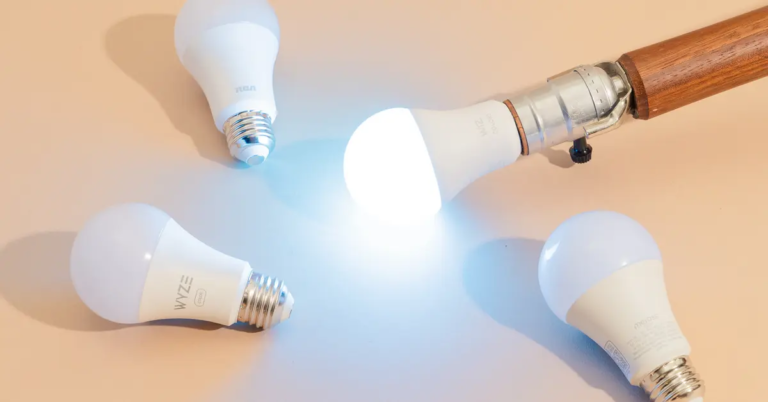Digital Wallets in the Era of IoT and Smart Devices: Embracing the Future with MPC Wallets
Introduction
The advent of the Internet of Things (IoT) and the proliferation of smart devices have revolutionized the way we interact with technology. From smart refrigerators that order groceries to wearable devices that monitor health, the interconnectedness of our gadgets has created a seamless digital ecosystem. In this era of IoT and smart devices, digital wallets have emerged as a pivotal tool, offering convenience, security, and efficiency in financial transactions. This blog post delves into the role of digital wallets in the IoT landscape, with a particular focus on the enhanced security provided by Multi-Party Computation (MPC) wallets.
The Rise of Digital Wallets
Digital wallets, also known as e-wallets, store users’ payment information securely and facilitate quick and easy transactions. They have become increasingly popular due to their ability to offer a range of payment methods, from credit and debit cards to cryptocurrencies. Digital wallets provide a level of convenience and security that traditional payment methods cannot match.
Key Features of Digital Wallets
- Convenience: Digital wallets allow users to store multiple payment methods and make transactions with a few taps.
- Security: Advanced encryption and authentication mechanisms protect users’ financial information.
- Integration: Digital wallets can be integrated with various financial services, loyalty programs, and payment platforms.
- Real-Time Transactions: Digital wallets enable instant payments, enhancing user experience.
Understanding the Internet of Things (IoT)
The Internet of Things (IoT) refers to the network of interconnected devices that communicate and exchange data over the internet. These devices range from everyday household items to complex industrial machinery. The IoT ecosystem aims to create smarter environments by leveraging data and automation.
Key Features of IoT
- Connectivity: Devices are connected to the internet, enabling data exchange.
- Automation: IoT devices can automate tasks based on data inputs and pre-set conditions.
- Data Collection: IoT devices collect vast amounts of data that can be analyzed to gain insights.
- Remote Control: Users can control IoT devices remotely through apps and interfaces.
The Intersection of Digital Wallets and IoT
The integration of digital wallets with IoT devices opens up new possibilities for seamless and secure financial transactions. From smart home systems to wearable technology, digital wallets enhance the functionality and user experience of IoT devices.
Smart Home Systems
In a smart home, IoT devices such as smart refrigerators, thermostats, and security systems work together to create a connected living environment. Digital wallets can be integrated with these devices to facilitate automated purchases. For example, a smart refrigerator can automatically order groceries when supplies run low, and the payment can be processed through a digital wallet.
Wearable Technology
Wearable devices like smartwatches and fitness trackers have become ubiquitous. These devices can be equipped with digital wallet functionalities, allowing users to make payments on the go. This integration enhances convenience, especially for quick transactions like public transport fares or coffee shop purchases.
Connected Vehicles
The automotive industry is rapidly adopting IoT technologies to create connected vehicles. Digital wallets can be integrated into these vehicles to enable automated payments for tolls, parking, and fuel. This not only streamlines the payment process but also enhances the overall driving experience.
Industrial IoT
In industrial settings, IoT devices are used for monitoring and managing machinery, logistics, and supply chains. Digital wallets can facilitate secure and efficient financial transactions in these environments, such as automatic payments for supplies and services.
The Role of MPC Wallets in Enhancing Security
While the integration of digital wallets with IoT devices offers numerous benefits, it also raises security concerns. MPC wallet, which utilize Multi-Party Computation technology, provide an advanced solution to these concerns by enhancing the security and privacy of digital transactions.
What Are MPC Wallets?
MPC wallets distribute the private key required for authorizing transactions across multiple parties. This approach eliminates single points of failure and significantly reduces the risk of unauthorized access and fraud.
Benefits of MPC Wallets
- Enhanced Security: By distributing key shares across multiple parties, MPC wallets protect against fraud and unauthorized transactions.
- Privacy Protection: The distributed nature of MPC ensures that sensitive information is not exposed to any single party.
- Fault Tolerance: MPC wallets can operate even if some parties are compromised or offline, ensuring uninterrupted access to funds.
- Regulatory Compliance: MPC wallets help businesses comply with data privacy regulations by ensuring that sensitive information is handled securely.
Practical Applications of MPC Wallets in IoT
Smart Home Payments
In smart homes, MPC wallets can be used to facilitate secure automated payments for services and supplies. For instance, a smart refrigerator using an MPC wallet can order and pay for groceries without exposing sensitive financial information.
Secure Wearable Transactions
Wearable devices equipped with MPC wallets provide an added layer of security for on-the-go payments. Users can make quick and secure transactions without the risk of their payment information being compromised.
Connected Vehicle Payments
For connected vehicles, MPC wallets ensure that automated payments for tolls, parking, and fuel are processed securely. This enhances the convenience and safety of digital transactions within the automotive ecosystem.
Industrial Automation
In industrial IoT, MPC wallets can manage automated payments for machinery maintenance, supply chain transactions, and other financial activities. This ensures that industrial operations remain secure and efficient.
Future Trends in Digital Wallets and IoT
AI Integration
The integration of artificial intelligence (AI) with digital wallets and IoT devices will further enhance the automation and personalization of financial transactions. AI can analyze transaction data to provide personalized recommendations and optimize payment processes.
Blockchain Technology
Blockchain technology can be integrated with digital wallets and IoT to provide an immutable and transparent ledger for transactions. This enhances security and trust in the IoT ecosystem.
Biometric Authentication
Biometric authentication methods, such as facial recognition and fingerprint scanning, can be integrated with digital wallets to enhance security and user convenience. This is particularly useful for wearable devices and smart home systems.
Expansion of Contactless Payments
The trend towards contactless payments will continue to grow, driven by the convenience and safety they offer. Digital wallets integrated with IoT devices will play a crucial role in this expansion, enabling secure and seamless contactless transactions.
Conclusion
The era of IoT and smart devices has created a connected ecosystem that offers unparalleled convenience and efficiency. Digital wallets, particularly those leveraging MPC technology, are at the forefront of this transformation, providing secure and seamless financial transactions. By integrating digital wallets with IoT devices, we can unlock new possibilities for automation, personalization, and security in our daily lives. As technology continues to evolve, the combination of digital wallets and IoT will play an increasingly important role in shaping the future of digital transactions, creating a smarter and more secure world for everyone.
Stay In Touch With Franciscotribune






